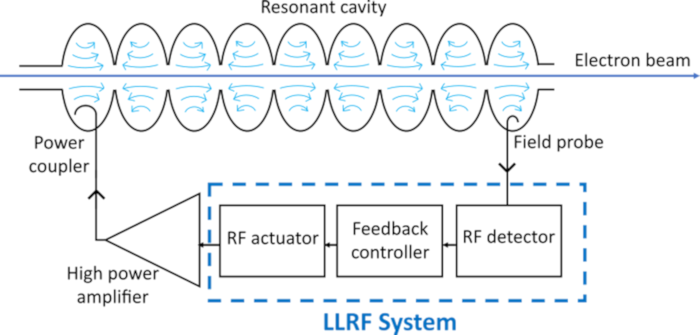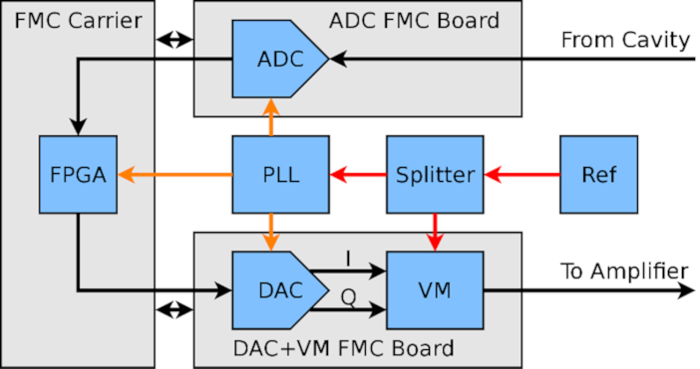Concept of the LLRF system for stabilization of accelerating EM fields in the resonant cavities of PolFEL linear accelerator utilizing direct sampling of the RF signal
Tomasz Kowalski
supervisor: Krzysztof Czuba
The Low-Level Radio Frequency (LLRF) control system is one of the fundamental parts of a particle accelerator, ensuring the stability of the oscillating electro-magnetic field, which is produced inside resonant cavities in order to accelerate charged particles. It relies on precise measurement of the field by In-Phase/Quadrature (IQ) detection of an RF probe signal from the cavity, which yields the instantaneous phase and amplitude of the field. The result of this measurement is fed to a digital feedback controller, which calculates an error signal and corrects the field amplitude and phase via an RF actuator, as per Figure 1.

Fig. 1 Block diagram of a LLRF system.
For the purpose of the PolFEL LLRF system, direct sampling is studied for IQ detection of RF signals. This methodology bypasses a downconversion stage, leading to a straightforward implementation without the need for additional calibration. The proposed architecture of the system is presented in Figure 2. It consists of an FPGA Mezzanine Card (FMC) carrier board, implementing the feedback controller and two FMC boards. One of them features a dual digital-to-analogue converter, along with a vector modulator and serves as the RF actuator, while the other houses wide-bandwidth analogue-to-digital converters for direct sampling of RF signals. The system is provided with a single 1.3 GHz reference signal, which is then used to locally synthesise the sampling clock, as well as upconvert the actuator signal to the resonant frequency of the cavities.

Fig. 2 Architecture of the proposed LLRF system for PolFEL linear accelerator.